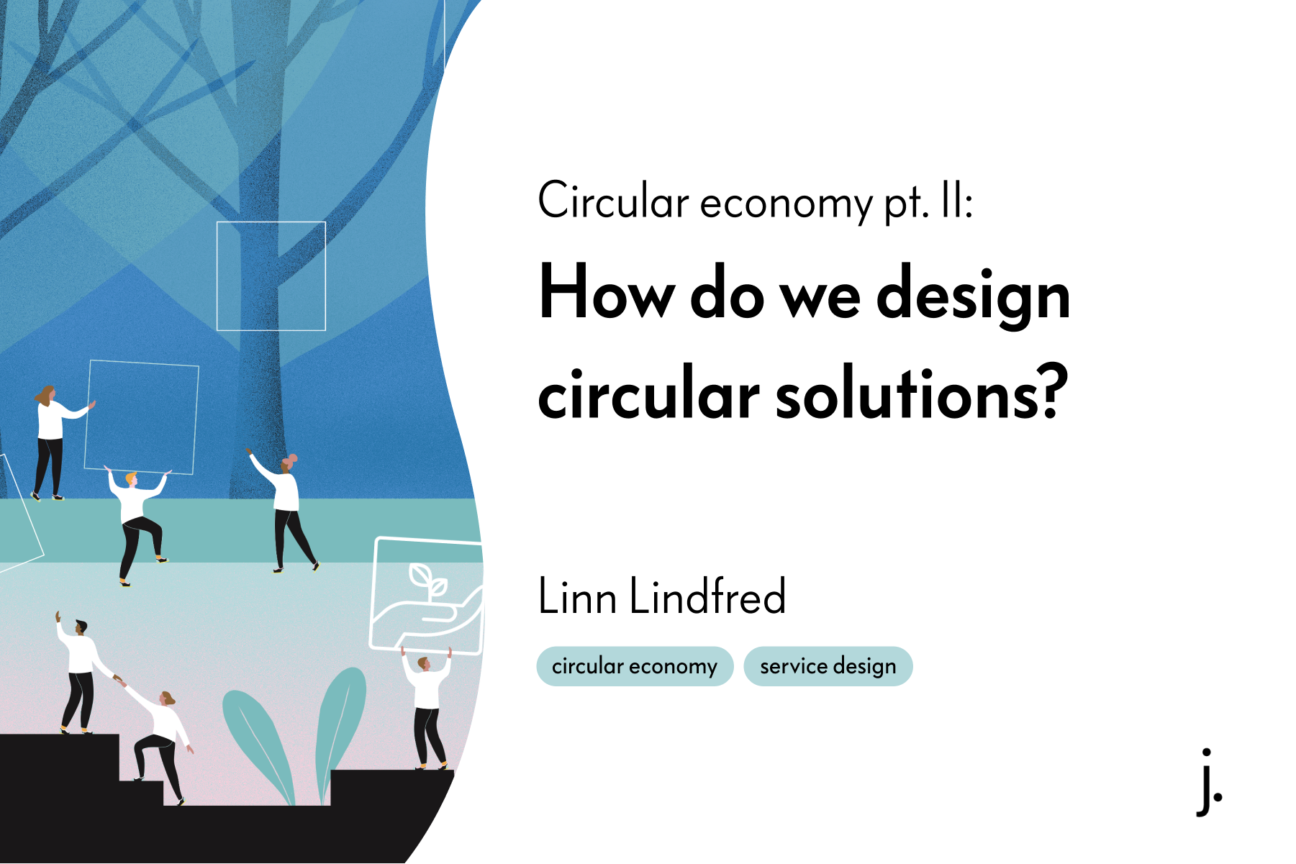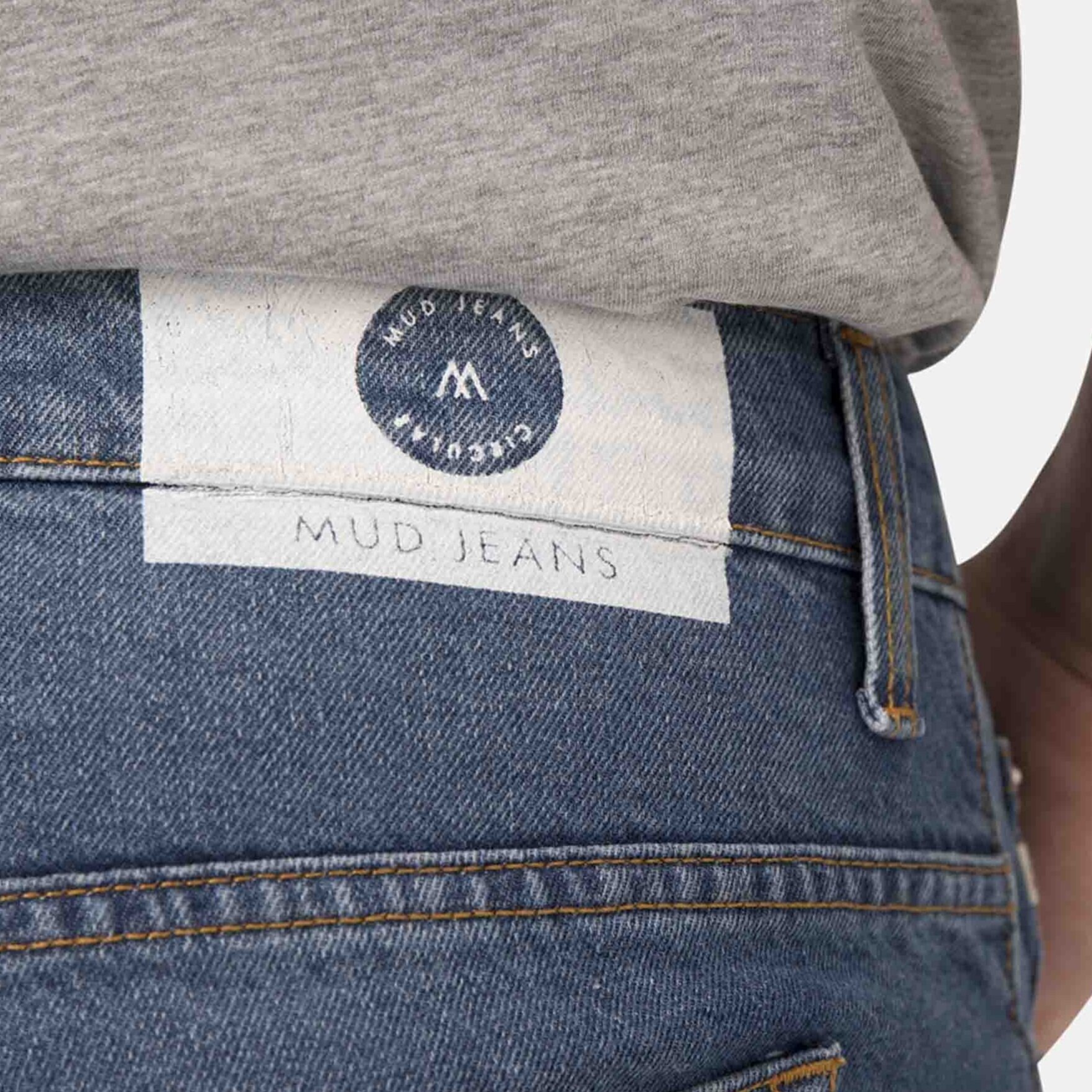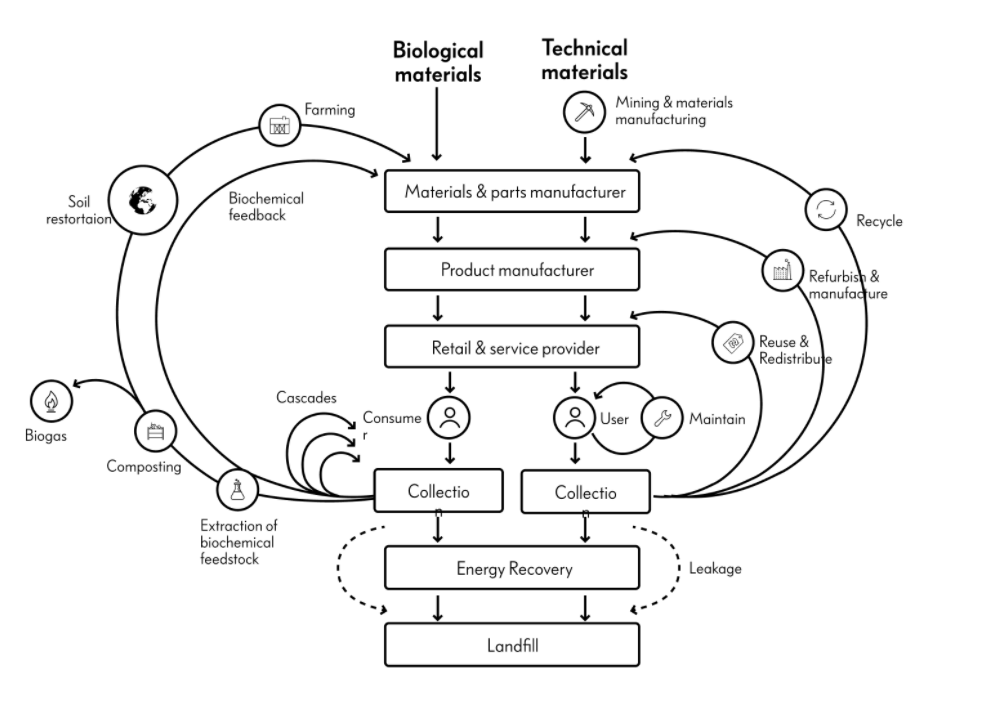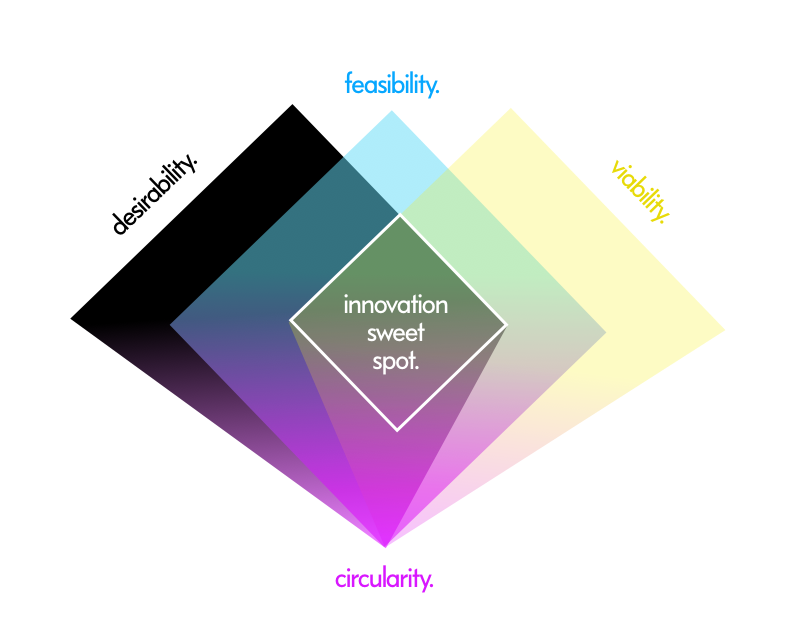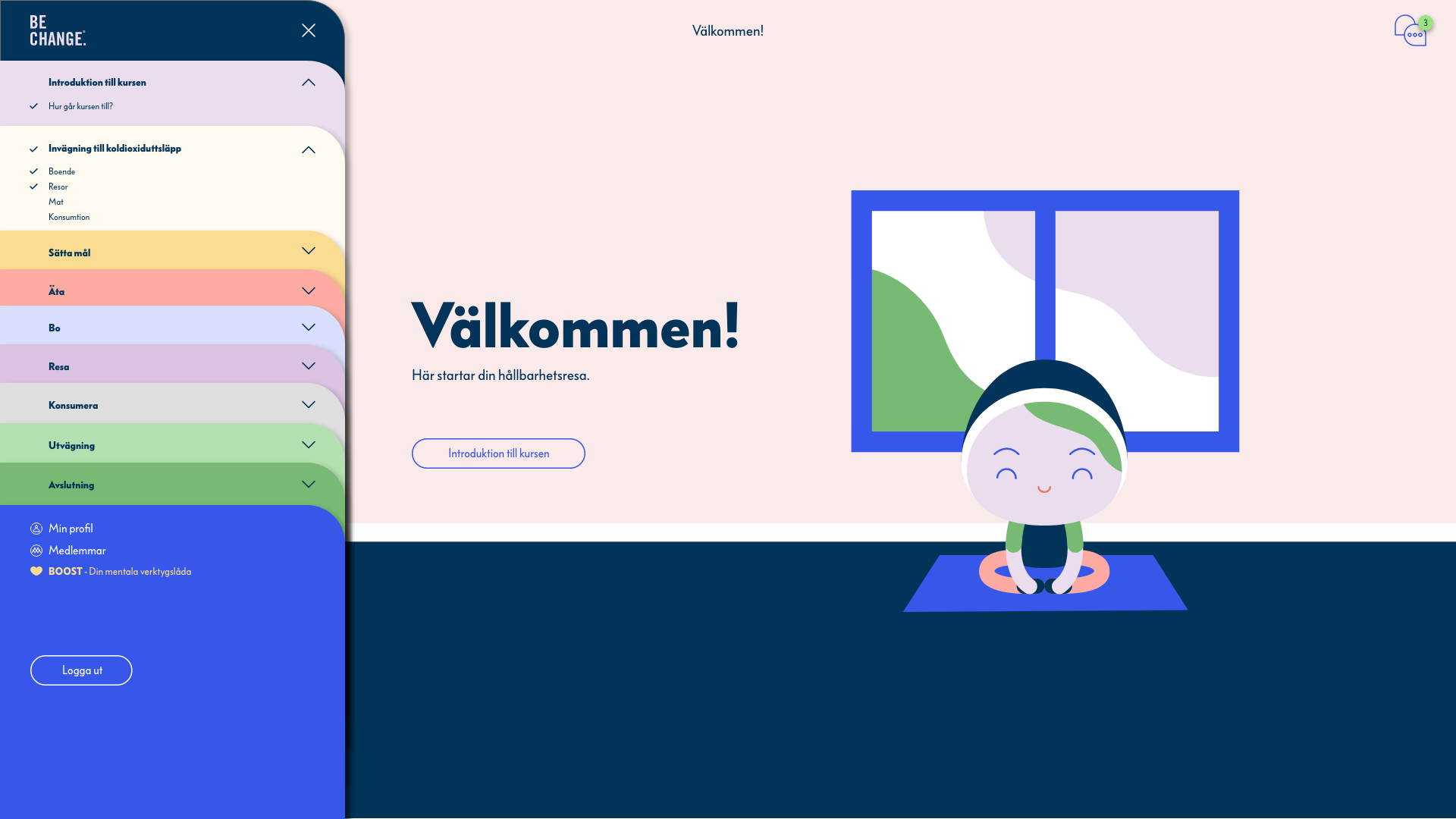In my previous blog post, I talked about the importance of circular ideas that answer to emerging market demands and enable the scaling of circular solutions. We have discussed digitalization as one lever to make that happen. This blog post will focus on how we can design those economically attractive and scalable digital solutions in the right way.
Design is crucial in the circular economy. I want to share two examples of where the traditional design processes of physical products make it impossible to achieve fully circular products.
Barilla has always had a plastic window on their packaging to enable the customer to see what is inside the package (although there is an image of the product printed on the packaging), and if you look at the jeans you have in your wardrobe, they usually have a leather patch on the back where the brand is printed.
So why is this wrong from a sustainability perspective?
A basic rule is that the more types of materials a product has, the more difficult (and expensive) it is to recycle or upcycle it. The more components in a product, the longer it takes to pull it apart. It also requires different handling of each component at the point of recycling. It is kind of crazy when you think about it – all of this extra work and cost just because somebody a long time ago thought something looked nice.
Now Barilla has removed their plastic windows so that they have a 100% recyclable packaging. Some jeans manufacturers, for example Mud Jeans, have removed the leather patch and printed the brand directly on the jeans fabric which has resulted in easier and cheaper recycling and upcycling, otherwise that option would not be economically viable.
Picture from Mud Jeans.
A small design change can thus play a huge role in terms of achieving circularity.
Designing for a circular economy requires a systemic approach and mind-set. In a circular economy, you are designing for the entire life cycle and multiple use phases. You have to take a step back and zoom out to realize how your product, idea or solution functions in the system of interconnected networks. In order to tackle that complex web of dependencies, you need to break it down into smaller pieces. You also need to zoom in and out to apply relevant circular design processes that positively impact both the overall experience as well as individual interactions.
An illustration of circular economy based on the “butterfly diagram” by Ellen MacArthur Foundation.
New circular business models also come with new challenges. The relationship with the customer becomes longer, more intense, and includes more information exchange. Also, the economic relationship between buyer and seller is prolonged and changes. Circular solutions thus need to be designed with this in mind. As mentioned in my previous blog post, you need to shift your focus from sustaining innovation to disruptive innovation in order to think outside of the linear box. This is true for both physical and digital products.
When designing digital products, Jayway by Devoteam applies a design-driven mindset and custom methodology. Including both UX and Service Design in order to identify, pinpoint, break down, and cross-examine the problem. Through our adaptive user-centric framework we explore social, environmental, business and IT needs to generate optimized flows grounded by circular awareness. This process is ideal to use when aiming for circular solutions since it enables us to break down the problem and solution, zoom in and out, and not get bogged down in linear thinking. Instead, we expand our perspective to think in terms of wider systems and full life cycles.
For instance, we used the design-driven approach in a project with the startup Biosorbe. Biosorbe has created a product called GreenAll. GreenAll is made from paper industry waste and it can suck up oil from oil spills and later reuse that oil. It is a fully circular product and in a first attempt to form an idea of how a digital take-back system could work, we went through a design sprint. The result was an initial concept for a user case and a storytelling around it. The idea was to send out digital notifications for products that were ready to be picked-up. The bins in which these products were stored would be equipped with QR codes containing information about the product and its contents. In addition, sensors could be placed on the bins that would automatically detect and communicate that it is time for a pick-up. In this way, Biosorbe could potentially achieve efficient logistics, fast and easy information exchange, and keep products circulating in their system.
Another project we have done that illustrates the importance of design is BeChange. BeChange has a unique educational program that teaches the user how to lead a more sustainable life while at the same time increasing his/her life quality. It focuses both on the mental and the practical aspects of transforming your life. Our mission was to digitize their concept and create a digital educational platform. Through design sprints including workshops, idea generation and user testing, we could both get an understanding of how the user wanted to interact with the solution and how BeChange’s concept could be translated into a digital platform. Read more about the project here.
Designing physical and digital solutions in the right way is equally important. Adding circularity into the equation creates another layer of complexity, and therefore it is crucial to use the right design methods to tackle that. For Jayway, it is very important that we actively apply different design methods both before, during and after service or product design. We combine all of our skills in tech and service design with our knowledge of circular products, processes, business models, and strategies so that we can fully take on the client’s problem and design, or scale, a circular solution.
In this blogpost, Jayway’s service designer Simone Slaviero explains why she designs with the earth in mind and she gives 5 great tips of tools to use when designing for a circular economy.
In my next blog post, I will explain how connected products and data science is crucial for the circular economy to evolve.
